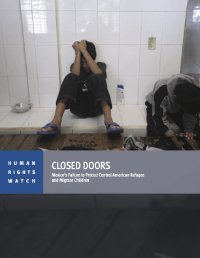By Susan Schmidt
While gang violence, community violence, and domestic violence have been recognized as contributing factors to Central American migration, less is known about the intersection between child maltreatment and migration. This article uses secondary data from United Nations High Commissioner for Refugees (UNHCR) interviews with unaccompanied minors from Central America and Mexico to examine child maltreatment. It provides information on the abused children, their abusers, and the questions that led to their disclosure of maltreatment. It finds that girls reported maltreatment at higher rates than boys; only girls in this sample reported sexual abuse and intimate partner violence; and boys experienced physical abuse more than any other form of maltreatment. Overall, girls experienced all forms of abuse at higher rate than boys. Fewer than half of this sample described maltreatment as an explicit reason for migration, even those who viewed it as a type of suffering, harm or danger. In addition, some disclosures suggest that childhood transitions, such as in housing, schooling, or work status, warrant further inquiry as a potential consequence of or contributor to maltreatment. The article recommends that professionals engaged with migrant children in social services, legal services, or migration protection and status adjudications should inquire about maltreatment, recognizing that children may reveal abuse in complex and indirect ways. Protection risks within the home or family environment may provide the grounds for US legal immigration protections, such as Special Immigrant Juvenile Status (SIJS) or asylum. Practitioners working with unaccompanied migrant children should use varied approaches to inquire about home country maltreatment experiences. Maltreatment may be part of the context of child migration, whether or not it is explicitly mentioned by children as a reason for migration. Policy Recommendations • US Citizenship and Immigration Services (USCIS) should update SIJS regulations to reflect changes in the law, and modify application procedures to incorporate research knowledge on the impact of trauma on children. • The US Departments of Homeland Security (DHS), Justice (DOJ), and Health and Human Services (HHS), should ensure that all children in immigration proceedings receive legal representation through public-private partnerships overseen by the HHS Office of Refugee Resettlement (ORR). Passage of Senate Bill 3108, the Fair Day in Court for Kids Act of 2021,1 would at least guarantee legal representation for unaccompanied minors. • Codify legal standards (via USCIS regulation, or Congressional statute) for granting asylum based on gender and gender-based violence, and include standards for children and youth. • Adjudicators from USCIS, Asylum Offices, and the Executive Office for Immigration Review (EOIR) should consider new information about painful, traumatic, or shame-inducing experiences—such as child maltreatment—as part of the gradual process of disclosure, rather than negatively reflecting on the credibility of the applicant. • Federal agencies with immigration responsibilities such as USCIS, Immigration and Customs Enforcement (ICE), and ORR, should be included in the federal government’s Substance Abuse and Mental Health Services Administration’s (SAMHSA) Interagency Task Force for Trauma-Informed Care. These agencies should require new trainings for immigration adjudicators, including immigration judges, asylum officers, Border Patrol agents, and Customs and Border Patrol (CBP) officers, on interviewing and making decisions related to children. • Legal service providers should adopt a holistic approach to service provision that includes social workers as part of the child’s legal team.
Journal on Migration and Human Security 2022, Vol. 10(1) 77-92




